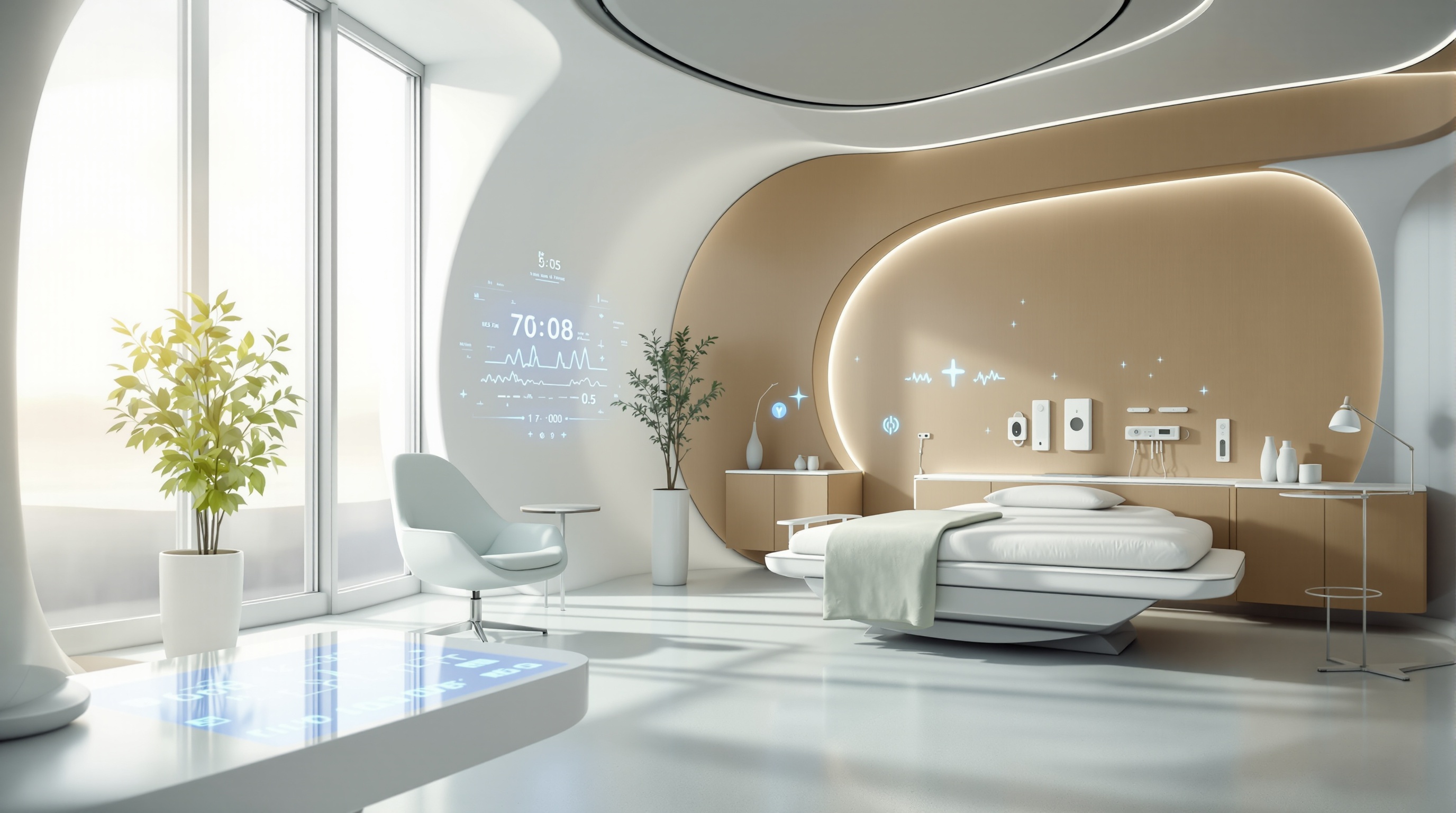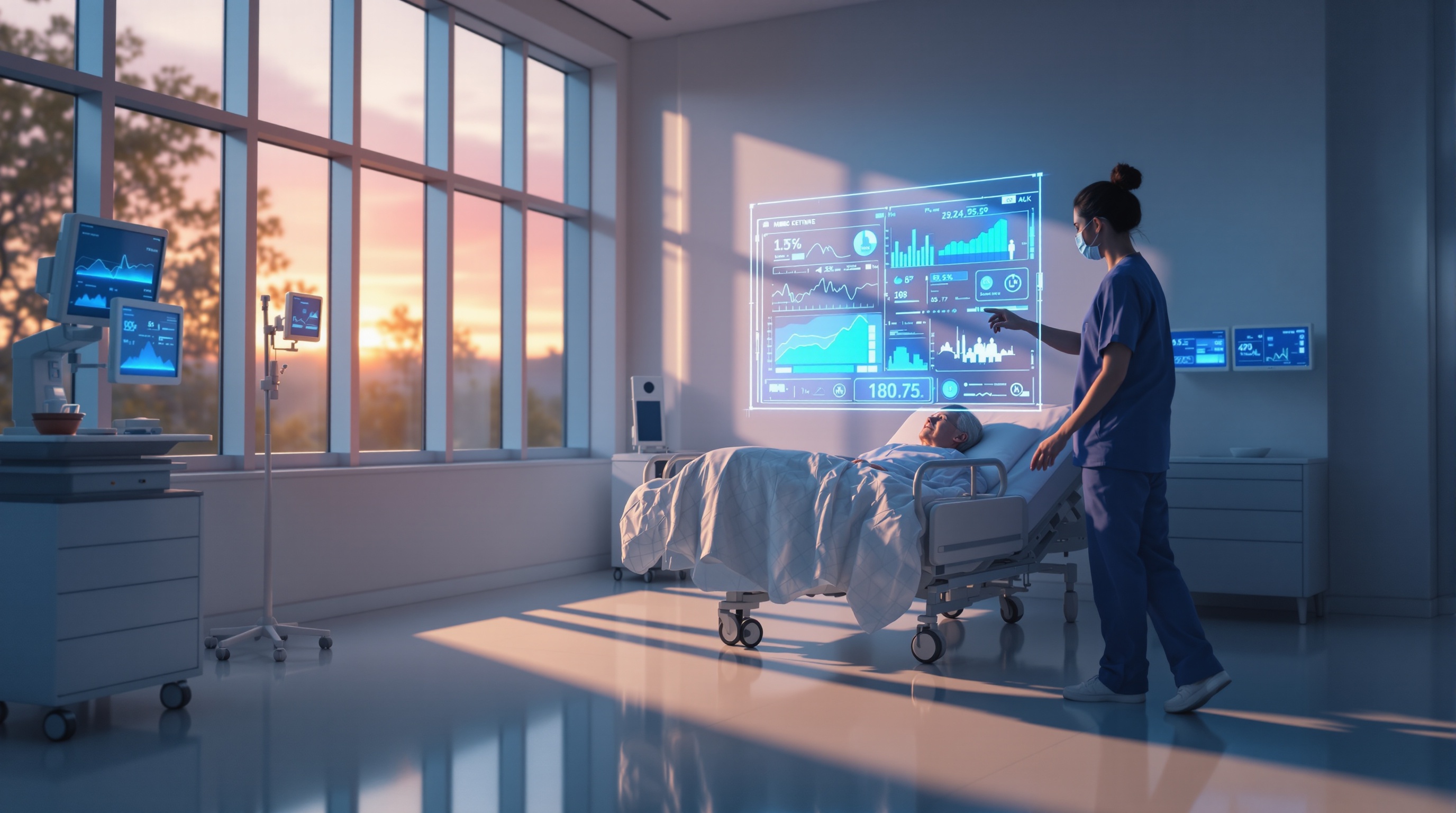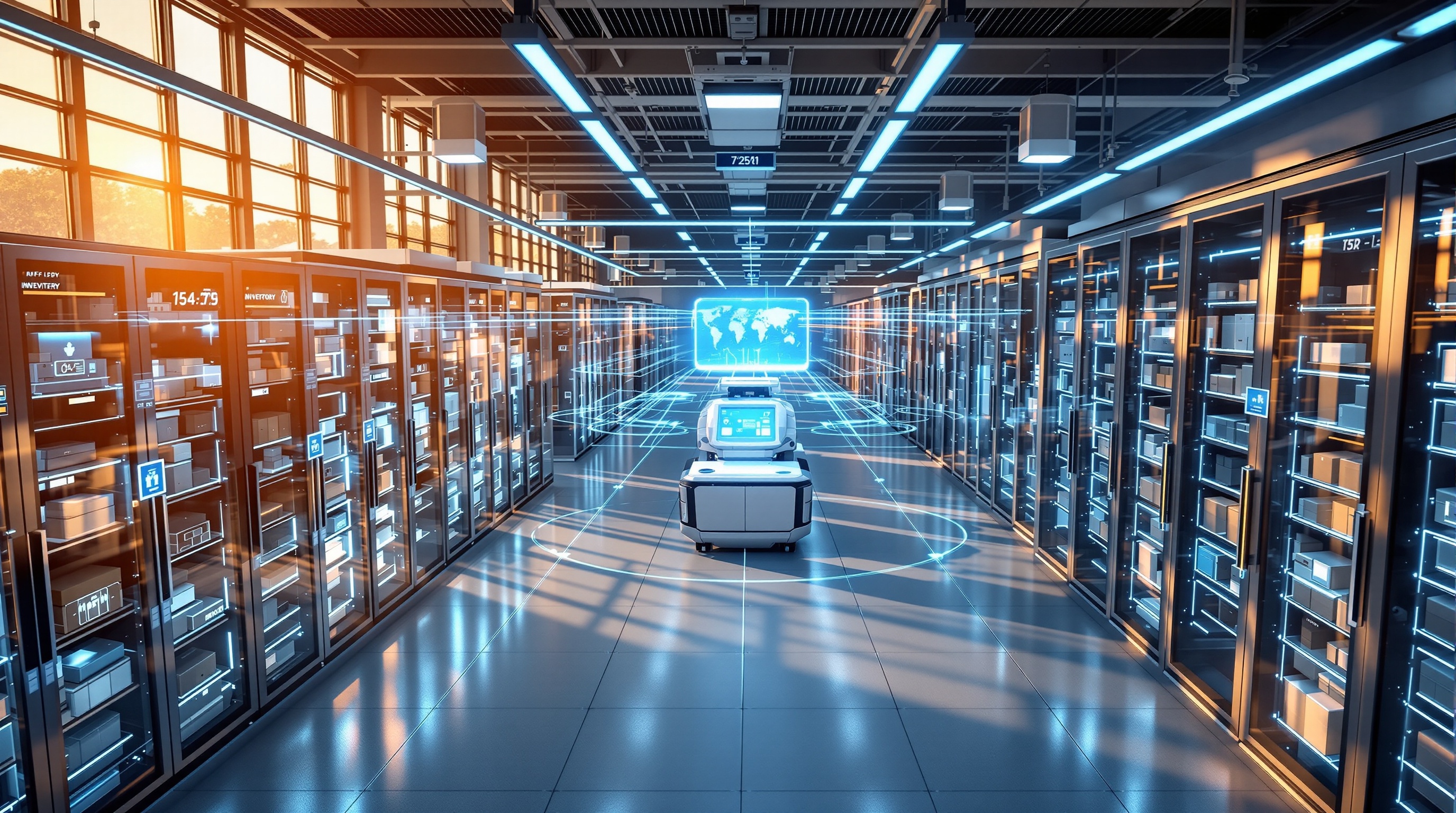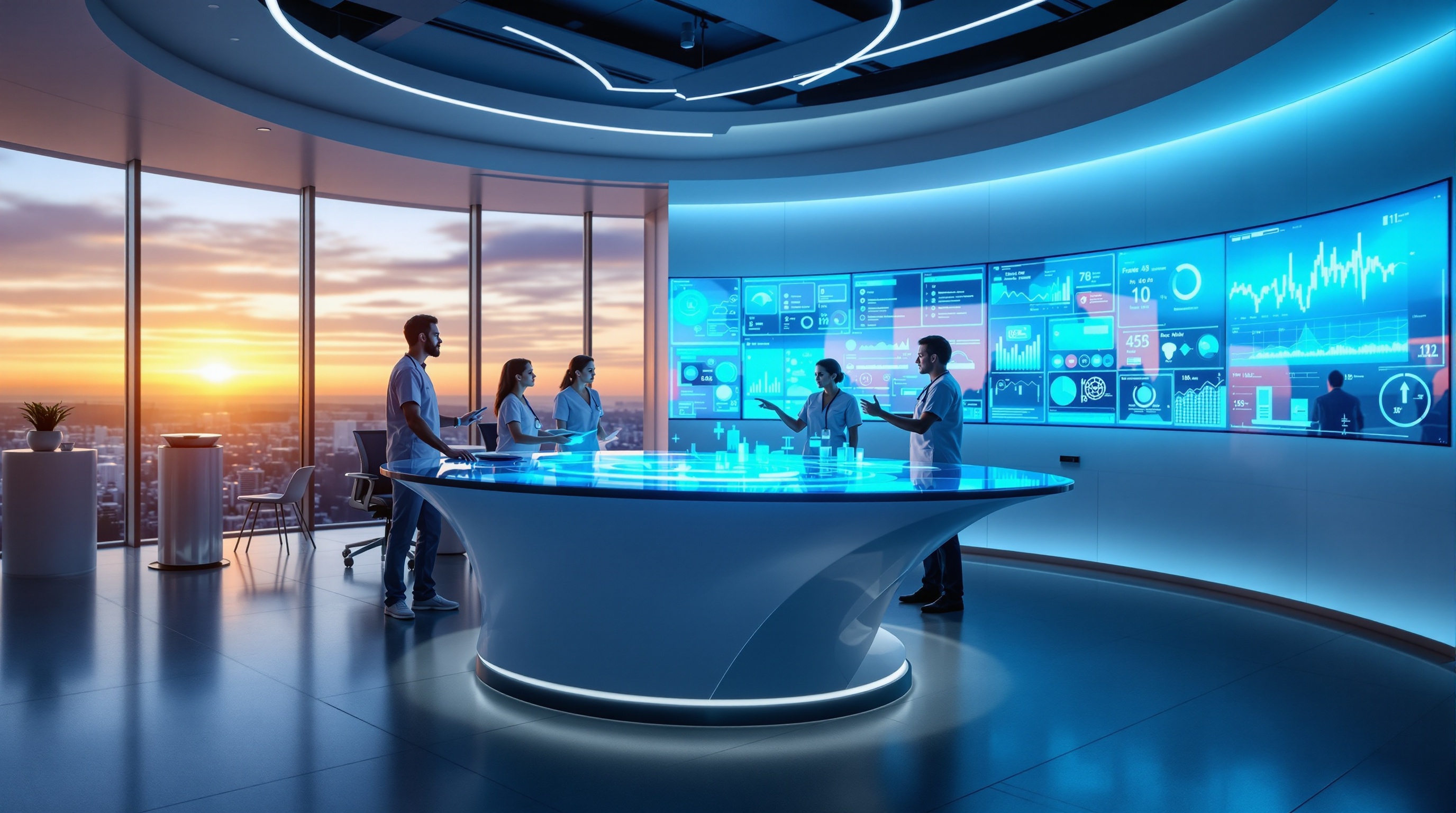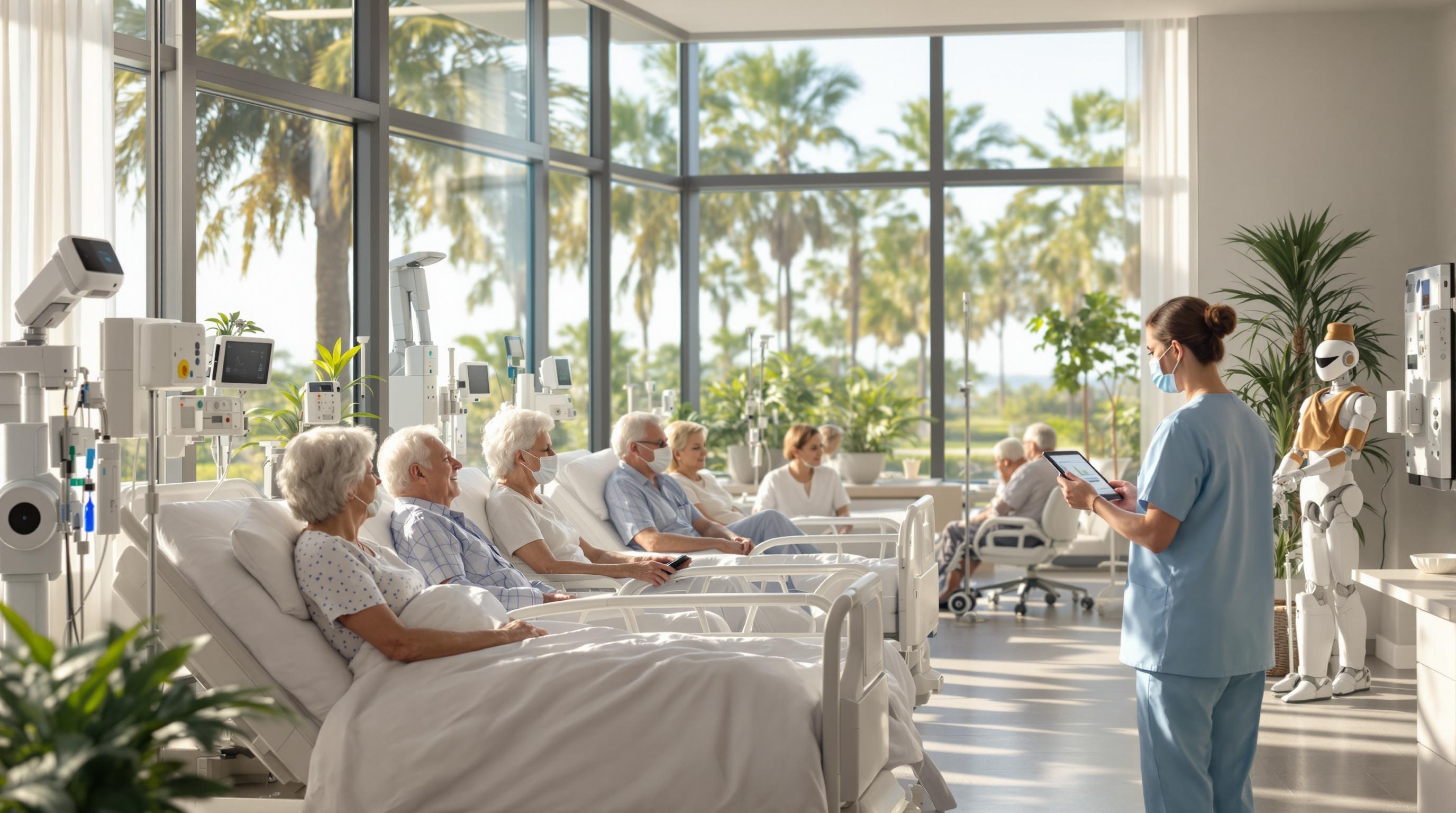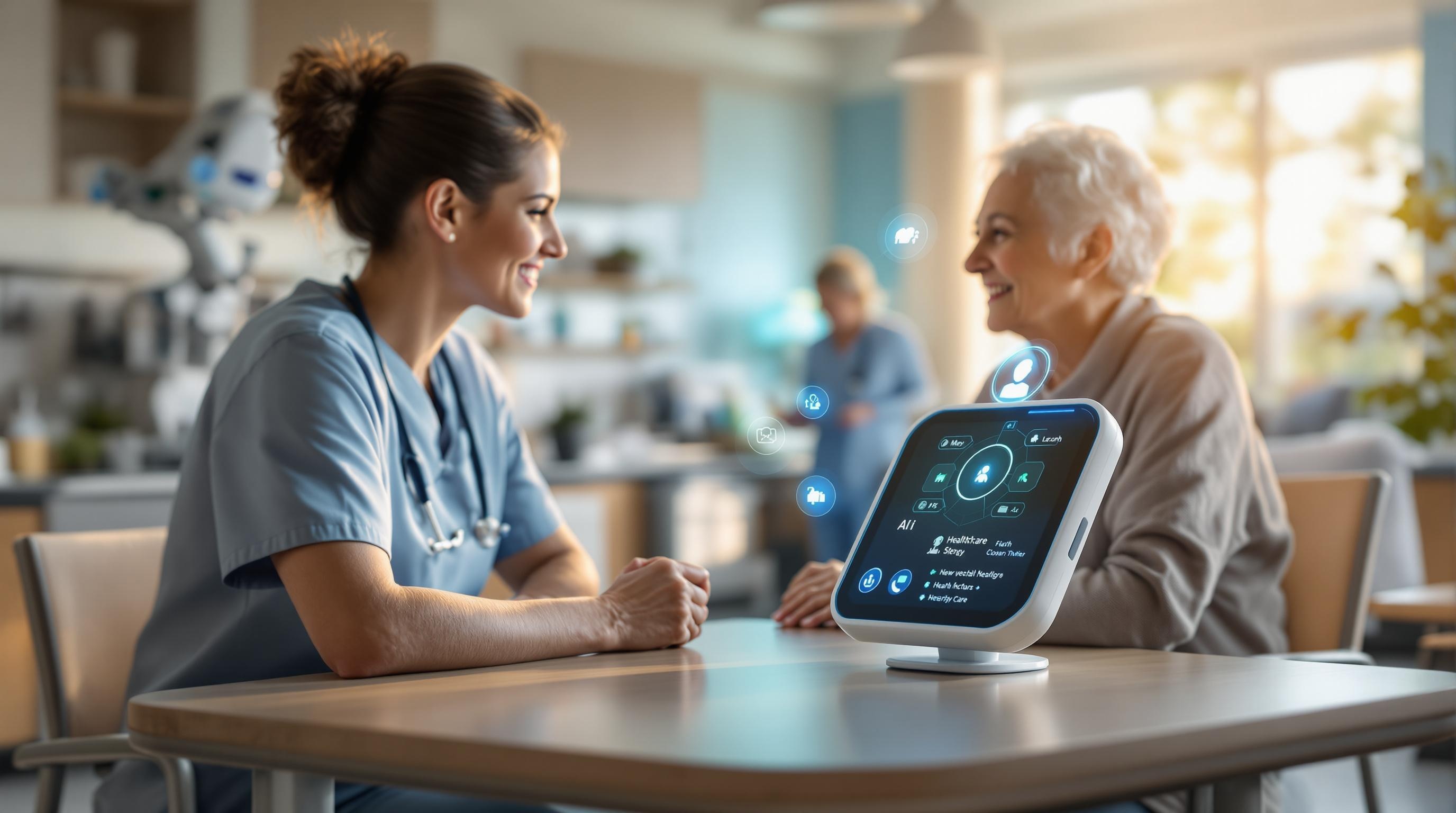AI Powered Monitoring in Nursing Homes: Transforming Care Quality
Discover how AI powered monitoring in nursing homes enhances resident safety, streamlines care, and supports staff in skilled nursing facilities.
Quick Navigation
- 1. Introduction
- 2. Current Challenges in AI Powered Monitoring Nursing Homes
- 3. How Sparkco AI Transforms AI Powered Monitoring Nursing Homes
- 4. Measurable Benefits and ROI
- 5. Implementation Best Practices
- 6. Real-World Examples
- 7. The Future of AI Powered Monitoring Nursing Homes
- 8. Conclusion & Call to Action
1. Introduction
Imagine a future where skilled nursing facilities can predict falls before they happen, detect subtle health changes instantly, and ensure residents’ safety 24/7—all with the help of artificial intelligence. That future is arriving faster than many realize. By 2030, over 20% of Americans will be age 65 or older, with the population of adults 85+ nearly doubling to 11.8 million. At the same time, the senior care industry is grappling with unprecedented staff shortages—29% of nurses may leave by 2025—while resident expectations for quality, safety, and personalized care continue to rise.
This perfect storm of rising demand and shrinking workforce has exposed critical vulnerabilities in traditional monitoring methods within nursing homes. Manual checks and reactive care models can miss subtle warning signs, leading to preventable hospitalizations, injuries, and gaps in resident well-being. Too often, existing technologies flood care teams with data but provide little actionable insight, leaving staff overwhelmed and residents underserved.
Enter AI-powered monitoring—a game-changing innovation poised to transform skilled nursing facilities. In this article, we’ll explore how artificial intelligence is being deployed to address staffing challenges, enhance resident safety, and deliver meaningful insights from mountains of health data. We’ll look at the latest research, examine real-world applications, and discuss the practical benefits and challenges of adopting AI in senior care. Whether you’re a healthcare administrator, clinician, or family member, discover how AI is reshaping the future of monitoring in nursing homes and what it means for quality care.
2. Current Challenges in AI Powered Monitoring Nursing Homes
AI-powered monitoring systems in nursing homes promise significant advancements in patient safety, early detection of health issues, and workflow optimization. Despite their potential, healthcare facilities encounter several challenges when adopting and implementing these technologies. Below are the primary pain points currently affecting operations, compliance, and patient care.
-
1. Data Privacy and Security Concerns
The integration of AI monitoring systems often involves the continuous collection of sensitive resident data. According to a 2023 Ponemon Institute report, the average cost of a healthcare data breach reached $10.93 million, the highest of any industry. Nursing homes are particularly vulnerable, raising concerns over compliance with HIPAA and other regulations. -
2. Integration with Legacy Systems
Many nursing homes operate with outdated electronic health records (EHRs) and IT infrastructure. Integrating AI solutions into these legacy systems is technically complex and resource-intensive. A HealthIT.gov survey found that only 46% of long-term care providers report their EHRs are interoperable with external systems. -
3. High Implementation Costs
The upfront costs of deploying AI-powered monitoring—including hardware, software, staff training, and ongoing support—pose significant financial challenges. According to a 2023 Becker’s Hospital Review analysis, initial AI implementation can range from $500,000 to over $5 million, placing it out of reach for many smaller or rural facilities. -
4. Workforce Resistance and Training Gaps
Staff may be hesitant to adopt new AI technologies due to fears of job displacement or lack of familiarity. A 2023 Commonwealth Fund report found that 61% of nursing home staff felt inadequately trained to use advanced digital health tools, impacting adoption rates and effective use. -
5. False Alarms and Alert Fatigue
AI-powered systems generate large volumes of alerts, which can lead to "alert fatigue" among caregivers. A study published in JAMA Internal Medicine (2023) showed that up to 90% of alerts in healthcare settings are non-actionable, potentially causing staff to ignore or overlook important warnings. -
6. Regulatory and Compliance Uncertainty
As AI applications in healthcare evolve, regulations often lag behind. Nursing homes face uncertainty about how to remain compliant with changing standards from agencies such as CMS and the FDA. This uncertainty can delay adoption and create risk for non-compliance penalties. -
7. Equity and Access Disparities
AI implementation requires robust digital infrastructure, which many under-resourced or rural nursing homes lack. This exacerbates disparities in care quality, as highlighted by a 2023 NIH study indicating that only 39% of rural facilities have the resources to implement advanced telehealth or AI-based monitoring.
These challenges collectively impact nursing home operations by increasing complexity, slowing workflows, and straining budgets. Compliance risks grow as data privacy and regulatory requirements evolve, and patient care may suffer from inconsistent implementation or missed alerts. Overcoming these hurdles is essential for healthcare facilities to fully realize the benefits of AI-powered monitoring and improve outcomes for residents.
3. How Sparkco AI Transforms AI Powered Monitoring Nursing Homes
The growing aging population and persistent staff shortages present significant monitoring challenges for nursing homes. Traditional approaches—like frequent physical rounds or basic surveillance cameras—struggle to provide timely, efficient, and dignified care. Sparkco AI delivers next-generation, AI-powered monitoring solutions that directly address these challenges, enhancing resident safety, staff efficiency, and overall operational effectiveness.
-
Continuous, Non-Intrusive Resident Monitoring
Sparkco AI uses advanced sensors and intelligent video analytics to monitor residents 24/7 without disrupting their privacy or sleep. Unlike standard surveillance cameras, Sparkco AI’s system identifies patterns and behaviors—such as wandering, falls, or abnormal movements—alerting staff only when intervention is necessary. This minimizes unnecessary checks and respects resident dignity, while ensuring safety. -
Real-Time, Actionable Alerts
The platform’s AI algorithms analyze data in real time, instantly notifying caregivers of urgent situations. For example, if a resident attempts to leave their bed at night or shows signs of distress, Sparkco AI sends immediate alerts to mobile devices or nurse stations. This targeted response system reduces response times and helps prevent incidents before they escalate. -
Automated Documentation and Reporting
Manual charting and incident documentation can be time-consuming and prone to errors. Sparkco AI automates these processes by generating accurate, time-stamped records of monitored events. This seamless documentation assists in compliance, reduces administrative burden, and ensures that staff can spend more time with residents. -
Predictive Analytics for Proactive Care
By continuously learning from daily activity patterns, Sparkco AI can predict potential health risks—such as increased fall likelihood or declining mobility. These predictive insights empower nursing home teams to take proactive measures, personalize care plans, and intervene before problems arise, ultimately improving resident outcomes. -
Integration with Existing Systems
Sparkco AI is designed for easy integration with existing electronic health records (EHRs), nurse call systems, and facility management platforms. This interoperability ensures a unified workflow, enabling seamless coordination among caregivers and simplifying IT management for facility administrators. -
Scalable and Secure Cloud-Based Architecture
With a secure, cloud-based platform, Sparkco AI supports facilities of all sizes. Updates and new features are delivered automatically, and data security is maintained through robust encryption and compliance with healthcare privacy regulations.
Sparkco AI’s comprehensive, AI-powered monitoring solution addresses the critical challenges faced by today’s nursing homes. By combining real-time analytics, automation, and seamless integration, Sparkco AI empowers staff to deliver safer, high-quality care—while optimizing operational efficiency in the face of workforce shortages and growing resident needs.
4. Measurable Benefits and ROI
The integration of AI-powered monitoring solutions in nursing homes is rapidly transforming the standard of care, while delivering measurable ROI and substantial operational benefits. Leveraging advanced sensors, analytics, and real-time alerts, these systems offer a robust value proposition for skilled nursing facilities. Below, we break down the key quantifiable advantages supported by industry research and case studies.
-
1. Reduction in Fall Rates (Up to 60%)
AI-driven monitoring systems can detect unusual movement patterns and immediately alert staff to potential falls. According to Today's Geriatric Medicine, some facilities report up to a 60% reduction in resident falls after implementing AI solutions, leading to improved safety and significant cost avoidance on fall-related treatments and litigation. -
2. Dramatic Time Savings for Staff (20-40%)
Automated monitoring reduces the need for manual bed checks and routine rounds. Studies have shown that facilities save an average of 20-40% of staff time per shift. This allows nurses to focus more on direct care, improving job satisfaction and patient outcomes. -
3. Cost Reduction (Up to $1,500 per Resident Annually)
By preventing adverse events and streamlining workflow, AI-powered monitoring can reduce per-resident costs by up to $1,500 per year through fewer emergency transfers, lower overtime expenses, and more efficient resource allocation (source). -
4. Improved Compliance and Documentation (30% More Accurate)
Automated systems generate detailed logs for care events, supporting regulatory compliance and reducing the risk of fines. Facilities using AI monitoring report 30% fewer documentation errors, enhancing survey readiness and audit outcomes. -
5. Faster Emergency Response (up to 50% Quicker)
Real-time alerts speed up emergency intervention. One case study cited a 50% reduction in response times to resident distress events, which is crucial for outcomes in falls or health deteriorations (case study). -
6. Enhanced Occupancy and Reputation
Facilities that publicly adopt AI-powered monitoring often see higher occupancy rates and improved family satisfaction scores. Some report occupancy increases of 5-7% within the first year due to enhanced safety and peace of mind for families. -
7. Reduction in Hospital Readmissions (15-25%)
Early detection of health issues via AI enables proactive intervention, leading to a 15-25% reduction in hospital readmissions among long-term care residents, as reported by several early adopters. -
8. Lower Staff Turnover (10-15% Improvement)
Streamlined workflows and reduced stress contribute to lower staff turnover. Facilities using AI monitoring have documented a 10-15% improvement in staff retention, reducing recruitment and training costs.
In summary, the ROI of implementing AI-powered monitoring in nursing homes is compelling: significant cost savings, measurable improvements in safety and compliance, and enhanced satisfaction for both staff and residents. For more detailed insights and case studies, visit Today's Geriatric Medicine.
5. Implementation Best Practices
Successfully introducing AI-powered monitoring into nursing homes requires a structured, thoughtful approach. To ensure safety, compliance, and staff buy-in, follow these actionable steps:
-
Conduct a Thorough Needs Assessment
Start by identifying specific pain points that AI monitoring can address, such as fall detection, resident wandering, or medication management. Engage clinical, administrative, and IT staff to gather diverse perspectives.
Tip: Survey frontline caregivers for their daily challenges.
Pitfall: Avoid assuming one-size-fits-all solutions; each facility’s needs vary. -
Build a Cross-Disciplinary Implementation Team
Form a team including leadership, nursing, IT, legal/compliance, and frontline staff. This ensures comprehensive planning and early buy-in.
Tip: Clearly define team roles and responsibilities.
Pitfall: Don’t overlook the importance of end-user input during decision-making. -
Assess Regulatory and Compliance Requirements
Review HIPAA, CMS, and state-level regulations related to resident privacy, data security, and AI use. Consult with legal advisors to avoid compliance risks.
Tip: Create a compliance checklist specific to AI technologies.
Pitfall: Never implement AI solutions without a clear understanding of data protection laws. -
Select the Right AI Technology
Evaluate vendors for proven results in long-term care, robust support, and user-friendly interfaces. Request demonstrations and pilot programs before full deployment.
Tip: Prioritize solutions that integrate with your existing EHR and alert systems.
Pitfall: Don’t be swayed by features you don’t need; focus on your core objectives. -
Develop and Deliver Comprehensive Staff Training
Train staff on system use, troubleshooting, and protocols for responding to AI-generated alerts. Provide ongoing education as technology or workflows evolve.
Tip: Use hands-on, scenario-based training for better retention.
Pitfall: Avoid “one and done” training sessions; reinforce learning over time. -
Establish Clear Communication and Change Management Strategies
Clearly communicate the benefits and expectations of AI monitoring to staff, residents, and families. Address concerns about job security, privacy, and workflow changes.
Tip: Foster a culture of transparency; share success stories and improvements.
Pitfall: Don’t dismiss staff fears—engage them in open dialogue. -
Monitor, Evaluate, and Iterate
Continuously track system performance, incident rates, and user feedback. Schedule periodic reviews to identify areas for improvement and update protocols as needed.
Tip: Establish measurable KPIs (e.g., reduction in falls, response times). Pitfall: Don’t “set and forget”—AI solutions require regular assessment. -
Plan for Scalability and Future Integration
Ensure your AI platform can adapt as your facility’s needs grow or regulations change. Consider how new modules or data sources might be incorporated in the future.
Tip: Maintain strong relationships with vendors for ongoing support.
Pitfall: Avoid solutions that lock you into rigid, non-scalable systems.
By following these best practices, nursing homes can harness the power of AI for safer, more efficient care—while minimizing disruption and maximizing staff and resident satisfaction.

